In her film Daughters of the Sexual Revolution: The Untold Story of the Dallas Cowboys Cheerleaders, producer Carra Greenberg explored both the fascinating story of said Dallas Cowboys Cheerleaders, plus the much wider issue of the women’s movement during the formative period of the sexual revolution.
According to Greenberg, the film was, at first, only determined to be an investigation into the phenomenon of the Dallas Cowboys Cheerleaders. “The film became something more than what we had anticipated,” Greenberg explained of her first feature-length documentary, noting that interviews with longtime Dallas Cowboys Cheerleaders’ director Suzanne Mitchell offered many new revelations for the film. “We followed her lead in many ways of where the film took us—we discussed all of these other topics; how women define themselves through the lens of her story. She’s the heartbeat of the film.”
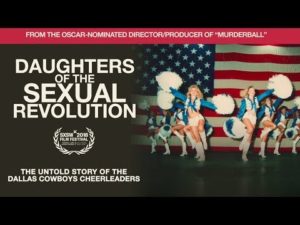
Ten months before she passed away in 2016, Mitchell told the filmmakers that she was battling pancreatic cancer but that she would facilitate interviews with other key figures who became featured in the project. “She had all of these incredible relationships that she built with these women,” said Greenberg of Mitchell. “Everything opened up as soon as she gave her blessing. Once we had Suzanne, we would get offers.”
Throughout her time as leader of the Dallas Cowboys Cheerleaders, from 1976 to 1989, Mitchell thrived in the decidedly masculine rigors of the National Football League. “She was the only woman in the boardroom,” Greenberg said of Mitchell, an employee of the Dallas Cowboys. “She was in a football organization in the golden era of America’s team. She was very inspiring, even back then.”
At Mitchell’s Texas base, Greenberg and her crew spent several days shooting interviews on three separate visits. “We saw how she came across on film and how powerful she was,” Greenberg recalled. ”She was very guarded at times and also sick. We didn’t know how it was going to come off on film.”
However, in her comments about the Dallas Cowboys Cheerleaders, Mitchell proved not only a keen interview subject but also an astute observer who connected her niche to a more holistic view of society. “We followed her lead,” said Greenberg. “The stories that she told became our guiding light. She was everything—she had so much strength inside of her.”
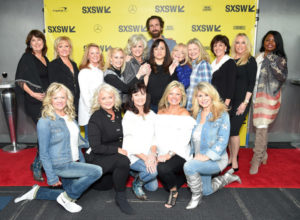
In their first visit to Texas, the documentary crew had 10-12 hours of time with Mitchell, while they were relegated to six hours for the next two visits combined. Nonetheless, Greenberg and her team captured the essence of, first, the cheerleaders’ widespread appeal, and, additionally, broader issues about women’s roles in proactively redefining their positions in American culture.
Notably, as soon as Mitchell took over the duties of directing the cheerleaders, they became, first, a national, then an international sensation. “Nobody had any idea,” Greenberg said of the cheerleaders’ initial appearances on television. “They exploded—it was shocking to everyone. They branded it; they marketed it. They were bigger than the Cowboys at one point. It worked.”
Once Mitchell was comfortable with the crew of the film, she sent out a memo to various cheerleaders from across Mitchell’s tenure as their administrator, prompting many of them to contact the production. To ease the task of acquiring cheerleader interviews, Greenberg established further bases of operations in Dallas, Austin, Houston, Los Angeles, and Santa Barbara. “They came to us,” Greenberg revealed of former cheerleaders. “They made it a priority to be involved. We wanted to tell the story about these women from the women themselves, not from an outsider’s perspective. Once Suzanne gave her blessing, they let us have creative control.”
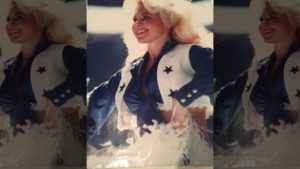
To illustrate the societal implications of the cheerleaders’ ascent, the film’s themes are enhanced with an abundance of colorful archival material, a healthy proportion of which presents prominent men espousing blatantly sexist views of women. “They said it without any kind of awareness of what they were saying,” revealed Greenberg. “We found it shocking. We got nothing from the Dallas Cowboys and nothing from the NFL. We started scouring talk shows, YouTube, random DVDs—this film is 80% archival. It was two years of scouring to find all of that.”
Momentous in the film is when, in 1989, Jerry Jones bought the Dallas Cowboys—under Jones’ ownership, the machinations of the cheerleaders completely changed. “She was very clear that it was not going to work,” Greenberg said of Mitchell, noting that the latter made an empowering and fully-formed decision to leave the organization, significantly, in the interest of the women under her tutelage who constituted the cheerleaders. “She gave them a lot of strength and protected them. The rules relaxed [in 1989], and there wasn’t that sense of protection. It was a different set of values when Suzanne was there.”
Surprisingly, the film’s director, Boston-based Dana Shapiro, had not made professional endeavors in the world of sports. “He’s watching the Super Bowl with his young son in 2015,” related Greenberg. “He saw the cheerleaders at halftime. ‘How are we still watching them? Where did they come from?’ We started the film in 2015—a year-and-a-half doing it on our own.”
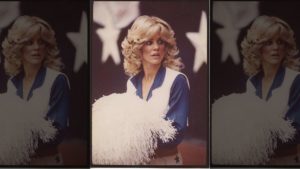
Even though the NFL and the Cowboys are massive organizations, and Jerry Jones is a litigious figure, Greenberg and Shapiro, who were close friends before embarking on the film, were undeterred in presenting the full picture of the domain of the cheerleaders. “We are going to tell the truth,” Greenberg professed. “We have the right as filmmakers to tell it. Because of our communications skills, it helped us navigate a lot of the challenges and obstacles that came up.”
In the end, the cheerleaders featured in the film, plus additional hordes of cheerleaders who have likely viewed the film since, have universally applauded Greenberg and Shapiro’s efforts, sensing that, foremost, the film captured Mitchell’s enduring spirit. “They had a perspective of generosity about Suzanne that her legacy was being preserved,” said Greenberg of the participating cheerleaders. “She was this character who was largely unknown. They stepped back and let us do what we did.”
For the uninitiated, Greenberg remarked that viewers should not expect a conventional documentary about the Dallas Cowboys Cheerleaders with her film. “It’s not about what you think it’s about,” Greenberg suggested. “I would hope that this is a story of family, inclusivity—a humanistic story. We should all be free to express ourselves the way we want to express ourselves. These women were feminists in their own right; that’s a universal message. They are all incredibly strong, powerful women who taught us all how to define yourself. Suzanne created a family—it was a non-traditional path. It was a love affair between all of them. It’s a beautiful story that is a lot deeper than people assume.”
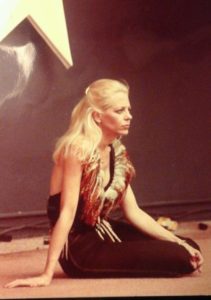
After premiering at the South By Southwest festival and 14 other festivals, including a celebration in Mitchell’s hometown, Daughters of the Sexual Revolution was distributed for a two-week run in 20 cities through Gravitas Ventures. The film can now be seen on the Starz premium cable channel plus several streaming platforms.
To view the film, link to: https://www.starz.com/us/en/movies/43783.





